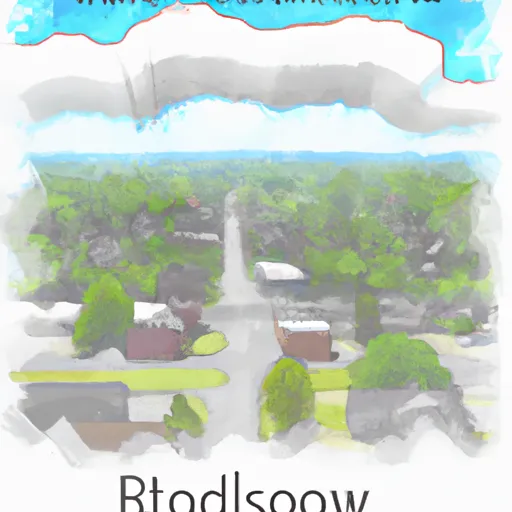-
 Snoflo Premium
Snoflo Premium
Get unlimited access to all our content
With no Ad interruptions! - Start Your Free Trial Login with existing account
Lindale
Eden Index
Climate
7.7
•
Recreation
3.8
•
Community
2.5
•
Safeguard
5.0/10

Lindale, Georgia is a small community located in Floyd County, in the northwest part of the state. The town experiences a humid subtropical climate, characterized by hot summers and mild to cool winters. Average temperatures in the summer months reach highs of around 90°F (32°C), while winter temperatures typically range from the low 30s°F (-1°C) to the mid-50s°F (10°C). Precipitation is fairly evenly distributed throughout the year, with an average annual rainfall of around 54 inches (137 cm).
Lindale is situated near the Coosa River, which provides opportunities for various outdoor activities. The river is known for its recreational fishing, particularly for largemouth bass, crappie, and catfish. Boating and canoeing are also popular along the river, with several boat ramps and access points available. The surrounding area offers scenic hiking trails, such as the Silver Comet Trail, which stretches for over 60 miles and is suitable for walking, jogging, and biking. Other nearby attractions include the John Tanner Park, which features a lake for swimming and fishing, as well as picnic areas and camping facilities. Overall, Lindale provides a charming setting for outdoor enthusiasts to explore and enjoy nature.
What is the Eden Index?
The Snoflo Eden Index serves as a comprehensive rating system for regions, evaluating their desirability through a holistic assessment of climate health, outdoor recreation opportunities, and natural disaster risk, acknowledging the profound impact of these factors on livability and well-being.
Climate Health Indicator (CHI): 7.7
Lindale receives approximately
1357mm of rain per year,
with humidity levels near 83%
and air temperatures averaging around
16°C.
Lindale has a plant hardyness factor of
7, meaning
plants and agriculture in this region tend to thrive during the non-winter months.
By considering the ideal temperature range, reliable water supplies, clean air, and stable seasonal rain or snowpacks, the Climate Health Indicator (CHI) underscores the significance of a healthy climate as the foundation for quality living.
A healthy climate is paramount for ensuring a high quality of life and livability in a region, fostering both physical well-being and environmental harmony. This can be characterized by ideal temperatures, reliable access to water supplies, clean air, and consistent seasonal rain or snowpacks.
Weather Forecast
Streamflow Conditions
Coosa-Tallapoosa
Area Rivers
Coosa-Tallapoosa
Snowpack Depths
Coosa-Tallapoosa
Reservoir Storage Capacity
Coosa-Tallapoosa
Groundwater Levels
Recreational Opportunity Index (ROI): 3.8
The Recreational Opportunity Index (ROI) recognizes the value of outdoor recreational options, such as parks, hiking trails, camping sites, and fishing spots, while acknowledging that climate plays a pivotal role in ensuring the comfort and consistency of these experiences.
Access to outdoor recreational opportunities, encompassing activities such as parks, hiking, camping, and fishing, is crucial for overall well-being, and the climate plays a pivotal role in enabling and enhancing these experiences, ensuring that individuals can engage in nature-based activities comfortably and consistently.
Camping Areas
| Campground | Campsites | Reservations | Toilets | Showers | Elevation |
|---|---|---|---|---|---|
| Blanton Creek Park | 50 | 561 ft | |||
| Cotton Hill | None | 214 ft | |||
| Bluff Creek | 88 | 217 ft | |||
| Hardridge Creek | None | 215 ft | |||
| Amity | None | 689 ft | |||
| White Oak Creek | None | 237 ft | |||
| Burnt Village | 120 | 687 ft | |||
| Spring Villa Campground | 24 | 604 ft | |||
| LakePoint State Park | 192 | 208 ft | |||
| Florence Marina State Park | None | 192 ft |
Nearby Ski Areas
Catastrophe Safeguard Index (CSI):
The Catastrophe Safeguard Index (CSI) recognizes that natural disaster risk, encompassing floods, fires, hurricanes, and tornadoes, can drastically affect safety and the overall appeal of an area.
The level of natural disaster risk in a region significantly affects safety and the overall livability, with climate change amplifying these risks by potentially increasing the frequency and intensity of events like floods, fires, hurricanes, and tornadoes, thereby posing substantial challenges to community resilience and well-being.
Community Resilience Indicator (CRI): 2.5
The Community Resilience Indicator (CRI) recognizes that education, healthcare, and socioeconomics are crucial to the well-being of a region. The CRI acknowledges the profound impact of these elements on residents' overall quality of life. By evaluating educational resources, healthcare accessibility, and economic inclusivity, the index captures the essential aspects that contribute to a thriving community, fostering resident satisfaction, equity, and social cohesion.

